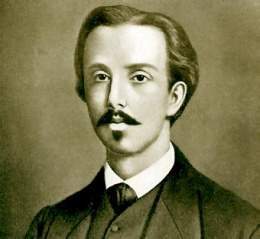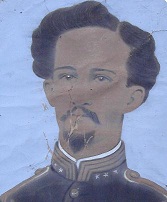
The Ten Years' War, also known as the Great War and the War of '68, was part of Cuba's fight for independence from Spain. The uprising was led by Cuban-born planters and other wealthy natives. On 10 October 1868, sugar mill owner Carlos Manuel de Céspedes and his followers proclaimed independence, beginning the conflict. This was the first of three liberation wars that Cuba fought against Spain, the other two being the Little War (1879–1880) and the Cuban War of Independence (1895–1898). The final three months of the last conflict escalated with United States involvement, leading to the Spanish–American War.

Camagüey is a city and municipality in central Cuba and is the nation's third-largest city with more than 333,000 inhabitants. It is the capital of the Camagüey Province.

Ignacio Agramonte y Loynaz was a Cuban revolutionary, who played an important part in the Ten Years' War (1868–1878).

Florida is a municipality and city in the Camagüey Province of Cuba. It is located 40 km (25 mi) north-west of Camagüey, along the Carretera Central highway. The city was established in 1907, and the municipality was established in 1924. Of all the municipalities of the Cuban province of Camagüey, Florida is third in area size. The name is Spanish for Land of flowers.

The Guáimaro Constitution was the governing document written by the idealistic and politically liberal faction in the insurgency that contested Spanish colonial rule in Cuba and imposed on Carlos Manuel de Céspedes, the conservative who claimed leadership of the independence movement. It was nominally in effect from 1869 to 1878 during the Ten Years' War against Spain, the first of a series of conflicts that led to Cuban independence in 1898.

Joaquín de Agüero was a Cuban revolutionary. In 1843 he freed all his slaves. In 1851 he headed an insurrection against the Spanish government, in the central part of the island coinciding with the filibustering Lopez Expedition. After a desperate contest, he was defeated in battle, captured, and shot, together with his main followers.
The following is a timeline of the history of the city of Camagüey, Cuba.
The Camilo Cienfuegos Military Schools System are a type of boarding school in the Cuban Revolutionary Armed Forces. Founded 1966, it has 20 campuses in many cities, and is an official military high school. They provide pre-military training to students aged 11 to 17. They forge of more than 70% of officers and 50% of the generals and colonels in the FAR. It is named after Camilo Cienfuegos, a Cuban revolutionary who, along with Fidel Castro, Che Guevara, Juan Almeida Bosque, and Raúl Castro, took part in the 1956 Granma expedition. Unlike the Russian Suvorov Military Schools, they are co-educational, modeled on United States military high schools and preparatory pre-college institutes.

Francisco Adolfo "Flor" Crombet Tejera was a Cuban patriot and participated in the three independence conflicts. He was appointed head, in commission, of the division of Cuba and Bayamo and was Major General. He landed with Antonio Maceo Grajales for "Duaba". He participated in the Ten Years' War and protested with Maceo in Mangos de Baraguá in defense of the total and definitive independence of Cuba.

Gaspar Betancourt y Cisneros, also known as "El Lugareño", was a Cuban revolutionary, writer, and pioneer of Cuban journalism.

Salvador Cisneros y Betancourt was a Cuban revolutionary and statesman, who was the only Cuban to become the president of the Republic of Cuba twice.
Francisco Sánchez Betancourt, was a Cuban revolutionary and politician.

Augusto Arango was a Cuban revolutionary and mambí General who was assassinated by Spanish authorities in Cuba during the Ten Years' War.
Tomás Pío Betancourt was a Cuban landowner, lawyer, botanist, and the first historian of the town of Camagüey in Cuba.
The Las Clavellinas Uprising was a military engagement of the Ten Years' War. It took place on November 4, 1868, at the Las Clavellinas estate, near Puerto Príncipe in Cuba. It was the initial armed uprising in the Camagüey Province against the Spanish colonial government.

Eduardo Agramonte y Piña was a Cuban revolutionary, doctor, and politician who was killed during the Ten Years' War in Cuba.

Ángel del Castillo y Agramonte was a Cuban revolutionary and military general who was killed during the Ten Years' War in Cuba.
José Tomás Betancourt was a Cuban revolutionary executed alongside Joaquín de Agüero by the Spanish authorities for his role in the early fight for Cuba's independence.
The Battle of Bonilla was a military engagement of the Ten Years' War. It took place on November 28, 1868, at Minas, in Puerto Príncipe in Cuba. After the Las Clavellinas Uprising in the province, the Spanish colonial government sent experienced military officers to quell the rebellion.
The Battle of El Salado occurred on January 7, 1869, during the Ten Years' War, near Salado River and the Salado settlement, in the municipality of Río Cauto, Granma Province, in Cuba.












